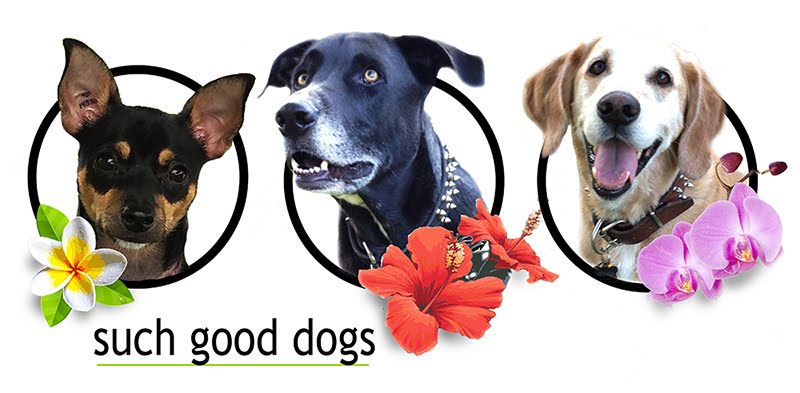As a continuation from our
Potty Training -Trainer Tips from August, (and as we continue potty training our new puppy), I am going to present you with an advanced training technique you can add to potty training that can be used for your dog's whole life. This is adding a bell, or something the dog can touch or ring, to let you know they need to go potty.
To teach this to DEVO, I went to Ben Franklin and got some ribbon and bells. Then simply attached the bells to a length of ribbon that DEVO can reach. He is a small dog, so the ribbon hangs pretty low to the ground.
TO BEGIN:
First we start with regular potty training. This means taking the dog out every few hours and always taking the puppy or dog out after: waking up from a nap, playtime, eating, and drinking. During this basic potty training, you should be adding your command like "Go potty." when you take the dog out. (Explained in more detail in this
previous post.) Remember to say "Good potty!" with LOTS of praise when the puppy goes outside.
During this basic potty training, you will start noticing signals the puppy will give that he may have to go potty. These can include: sniffing around a certain area or near the way out, disappearing suddenly (usually going out of sight to potty), whining, pacing back and forth, whining or jumping near the door or window. Early in our potty training, DEVO gave a very clear signal of whining then jumping near the door when he had to go. His signal has decreased to a simple whine as we are redirecting him into the Bell training. Each dog will have their own signals. Keep a watchful eye and it will soon become apparent what these signals are for your dog.
In basic potty training (especially when the puppy can't hold it very well), as soon as the puppy gives these signals, immediately get up and give your command like, "you need to Go Potty?" Put the leash on and take the puppy directly out to the area to potty. Continue as above (good potty, praise, etc.)
TO ADD THE BELL:
Continue training but when the puppy starts to give his signal, incorporate the bell.
So, when DEVO goes to the door and whines (telling me he has to go potty), I say "Do you have to go potty?" Then I come over to the door and point to the bell, and again say, "Go potty?"
Initially, you will want to come over after the puppy signals the need to go potty, say your phrase, and ring the bell yourself. Say "Let's go potty!" then touch the bell a few times. If the puppy touches the bell, give lavish praise..."Good! Let's go potty." Continue with excitement until the puppy starts touching the bell.

If you are consistent with using the bell when the dog signals you he has to go potty, he will learn to associate the Bell with going potty and eventually start touching the Bell instead of giving his other signals (such as whining). This training does take time. Don't think it will happen overnight or even in a few days. Most likely it will take several weeks to a few months. Don't get discouraged. It will all be worth it in the end. From now on you will have a dog that will easily let you know when he really has to go potty. Besides that, it is an extra helpful way to keep up with proper potty training for you pup. Many of us do not take a new puppy or dog out to go potty nearly as often as we should!
This was after DEVO rang the bell. He is waiting to go outside. Good boy!
(NOTE: You may also need to do a side training of "Touch," teaching a dog to touch an object. For "Touch Training," say your word "Touch," touch a simple object like a toy while encouraging the dog to mimic you. When they do, "Good Touch!" and reward. Work up to more difficult and unusual objects.)


















